I grew up in Ongha Village in Ohangwena, one of the northern regions of Namibia. Marula trees or Sclerocaya birrea are very common here and local people have become creative to financially provide for themselves by selling Marula fruits or kernel oil. – Marula is an essential food and cosmetic product amongst Namibian people. The fruits are in season every year from January to April.
The Fruit
The ripe fruit has a light-dark yellow skin and the flesh on the inside is white and succulent, with a distinctive sweet-sour flavour.
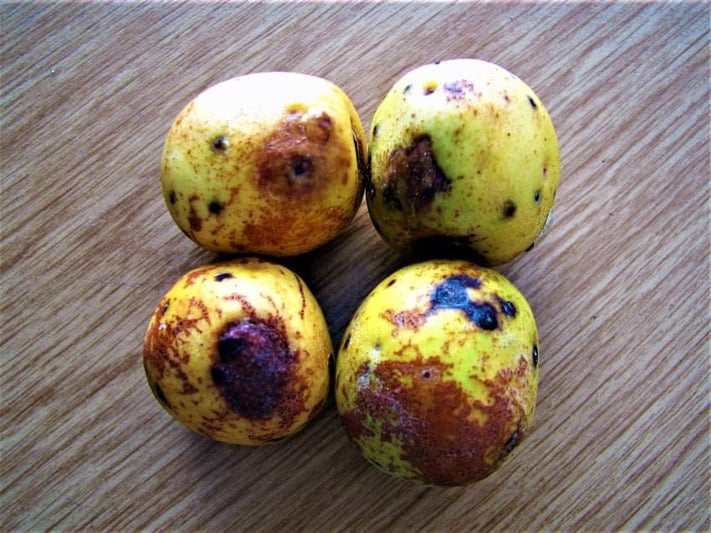 Rights to Ron Swilling
Rights to Ron Swilling
The Stone
It is the size of a walnut and brown in colour on the outer layer. If you crack open the thick and woody top lid, you will usually find two or three oblong kernels that are white in colour and covered in light-dark brown skin.
 Rights to Ron Swilling
Rights to Ron Swilling
Traditionally, women use cow horns to squeeze Marula juice out of the ripe fruit, which comes in two different forms: Oshinwa is freshly squeezed and consumed the next day especially by children as it contains a sweet taste. Omaongo is Marula juice that has been fermented for two-four days and is enjoyed by elders as it’s potent.
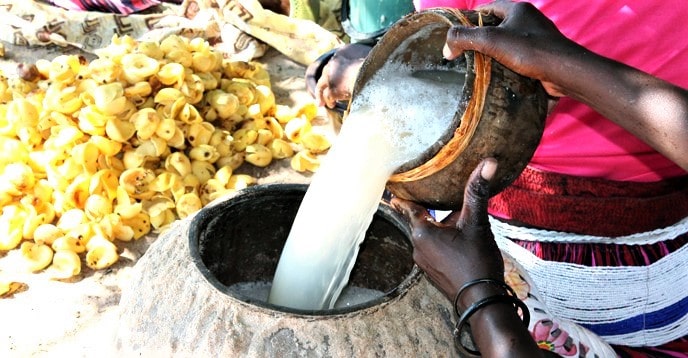 Rights to Ministry of Youth, National Service, Sport & Culture of Namibia
Rights to Ministry of Youth, National Service, Sport & Culture of Namibia
Stones left from the juicing period are piled up or evenly rested on a large sack in the homestead yard to dry.
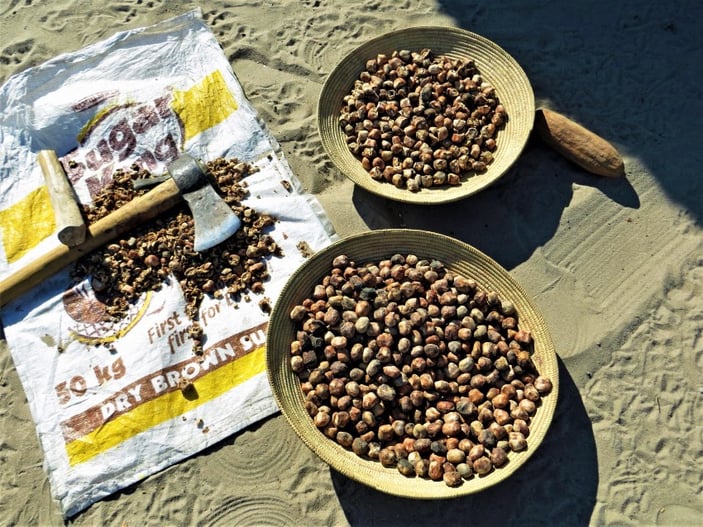 Rights to Ron Swilling
Rights to Ron Swilling
The women rotate between the homesteads in their little community, to help each other to process the dried stones.
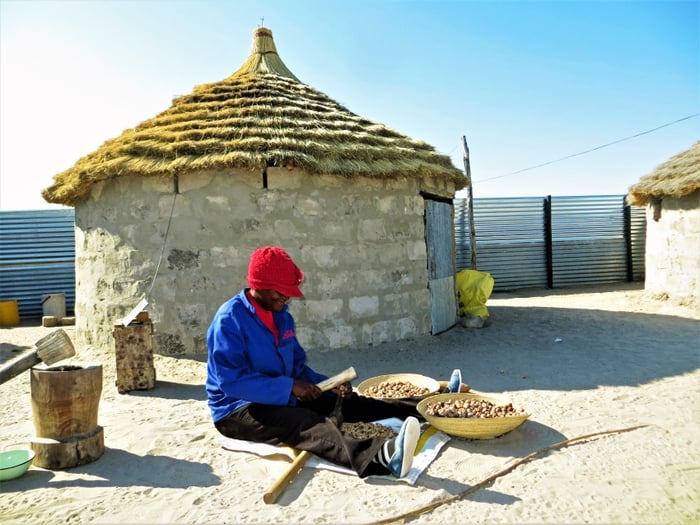 Rights to Ron Swilling
Rights to Ron Swilling
They sit under the shade of a hut or tree, cracking Marula stones and removing kernels, as they share and enjoy the latest hot gossip in the village.
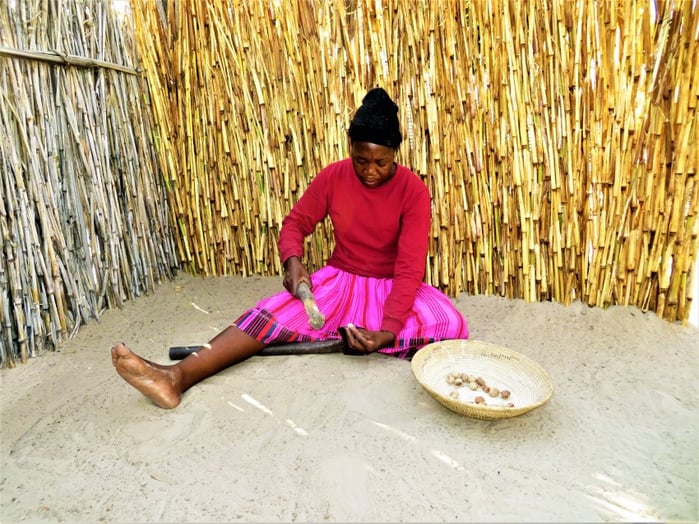 Rights to Ron Swilling
Rights to Ron Swilling
It would take me a few weeks to get through the heaps of stones, but luckily there are experts at cracking Marula stones and removing kernels, like my aunt Nepti and her friends, who amazingly go through them in a couple of days. Finally, the kernels are manually pounded and cold pressed for oil.
 Rights to Ron Swilling
Rights to Ron Swilling
The oil is clear, pale golden-brown and has a nuttyaroma. It can be used for various purposes and contains nutrients and antioxidants, such as essential amino acids, Vitamin C, Vitamin E, flavonoids that assist to renew cells and phenolic compounds.
 Rights to Mannfred Goldbeck
Rights to Mannfred Goldbeck
When applied to the skin regularly, the oil helps to build healthy collagen and protects against premature aging. The essential fatty acids Omega-9 (oleic acid) and Omega-6 (linoleic acid) moisturise the skin, improve skin elasticity, increase smoothness and reduce transepidermal water loss. – With a little help from Marula oil you can finally look just your rightful (youthful) age, even under the influence of the Namibian sun!
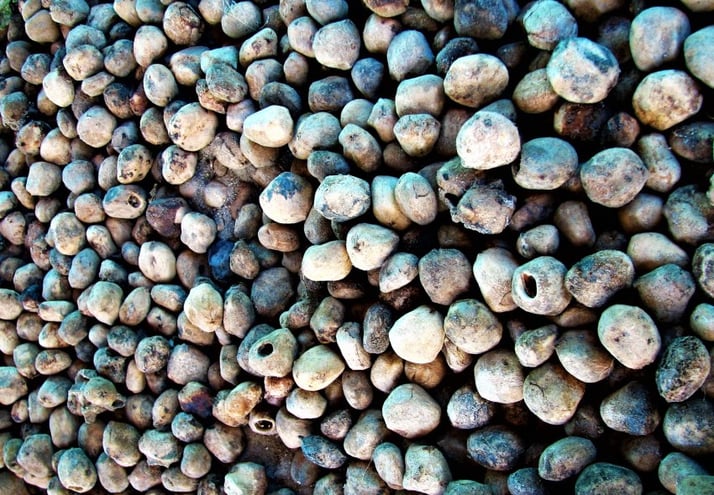 Rights to Ron Swilling
Rights to Ron Swilling
If your shoulders and neck are tense as you cannot seem to sit properly at your desk while you tackle some work, Marula oil is a great massaging oil. – Ask that friend or colleague who owes you a huge favour to give you a massage with Marula oil. Take a spoon or two to settle stomach aches. Add shine and strength to your crowning glory with an application of Marula oil to scalp and hair.
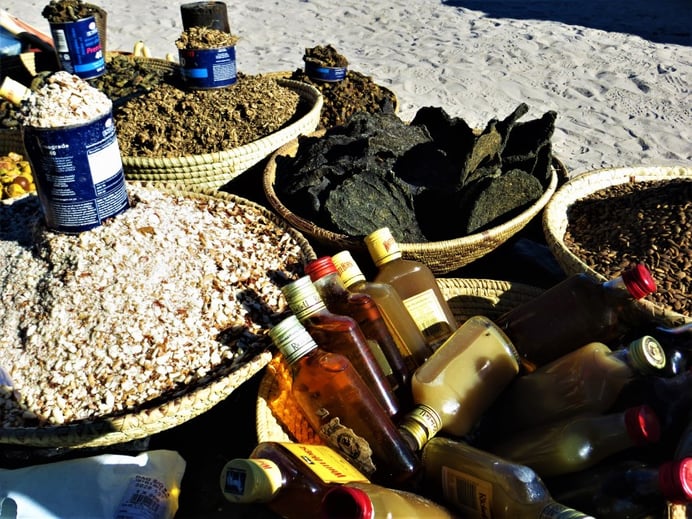 Rights to Ron Swilling
Rights to Ron Swilling
If you find yourself in Windhoek after spending a few days at our Gondwana Lodges and would like to try a few Marula oil cosmetic products, check out Neema Cosmetics. I am sure there’ll be a Marula oil product to peek your interest.
Have you tried Marula oil and which benefits have you experienced? Where else can you find Marula oil products? Let us know by sharing your story in the comment section below.
Author – I’m Nela, from Windhoek Namibia but born in a small village called Omatunda in northern Namibia. I am passionate about writing, research and photography, as it helps me gain knowledge about people and my country.



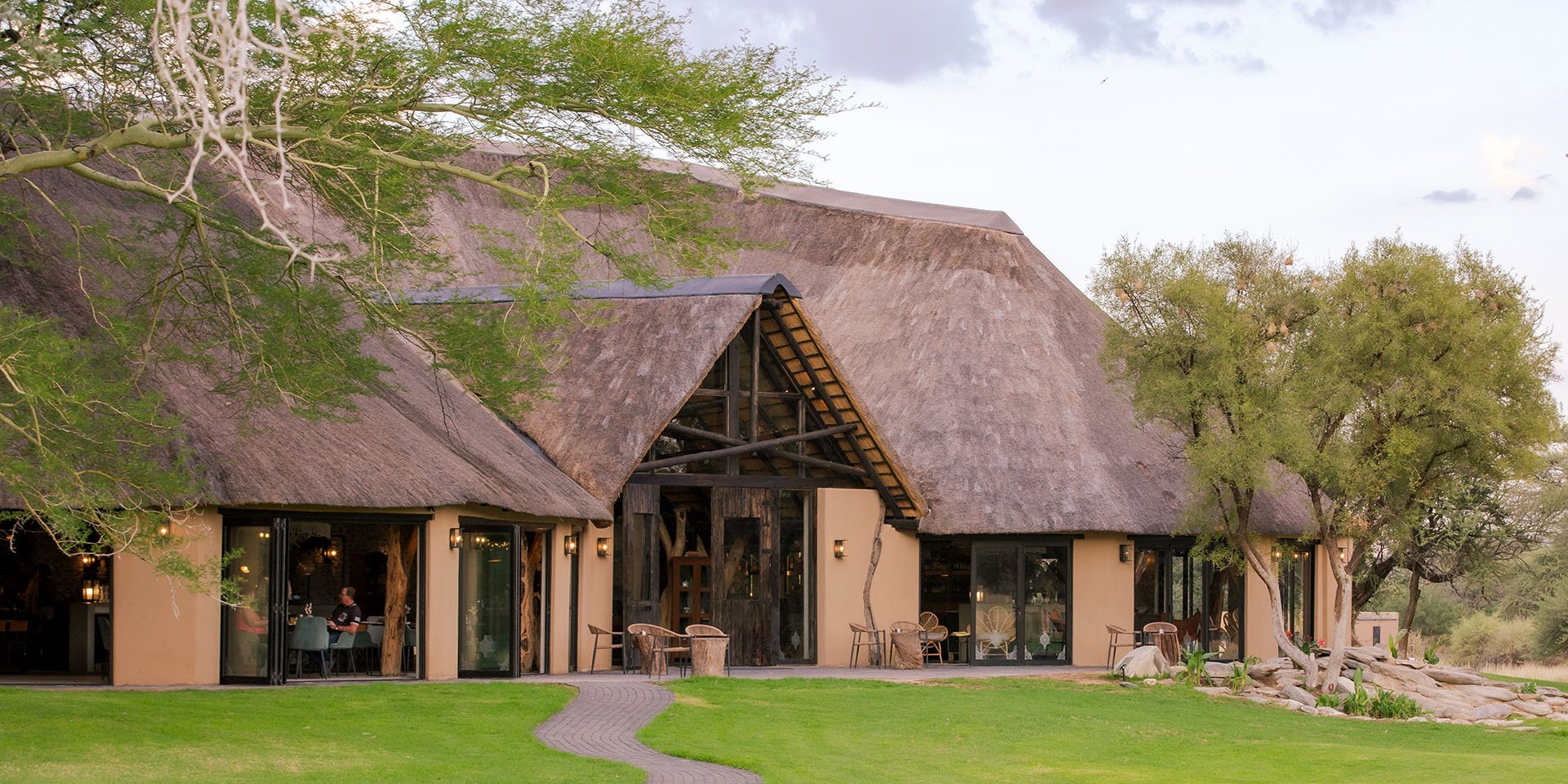
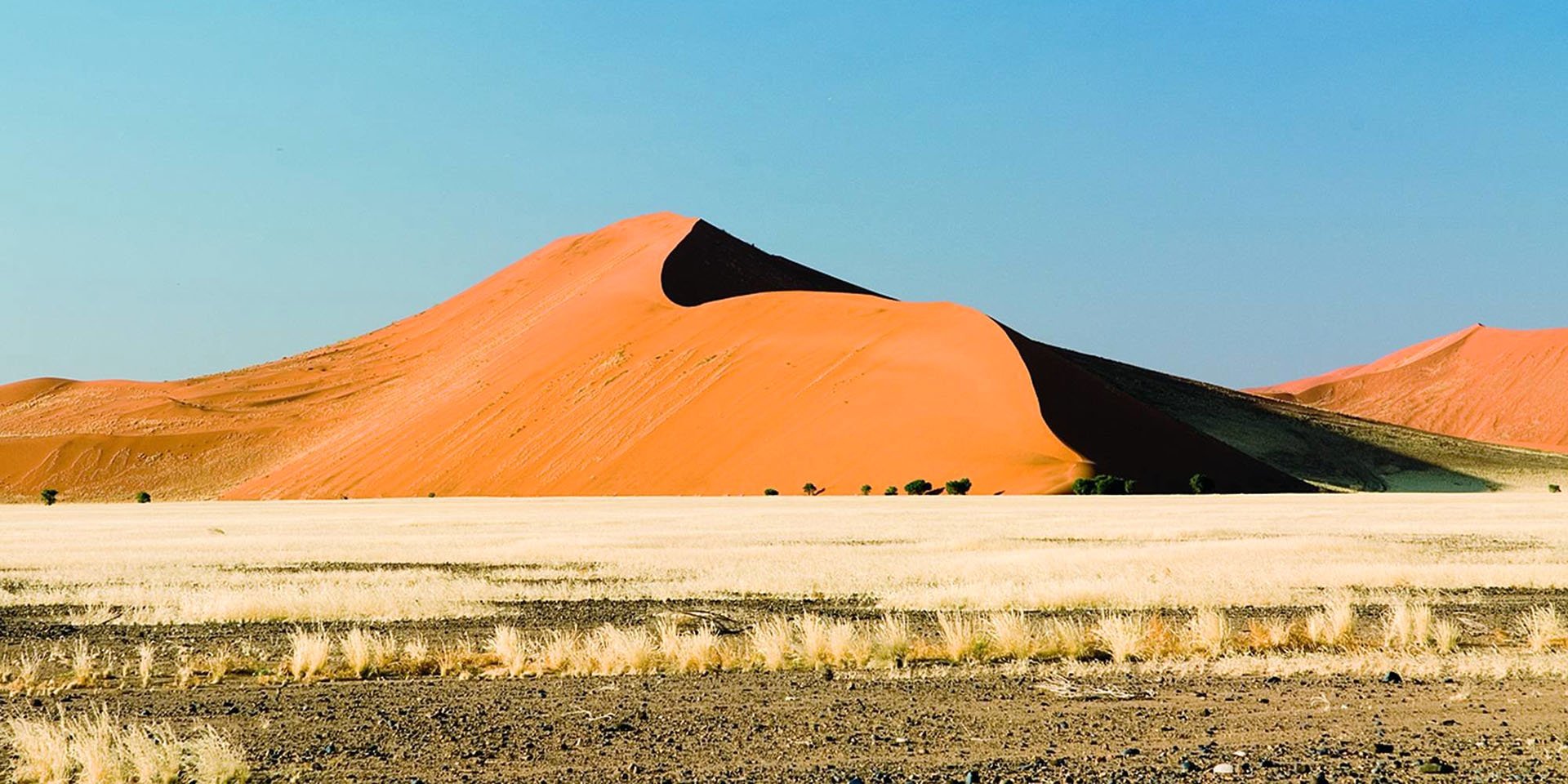

SUBMIT YOUR COMMENT